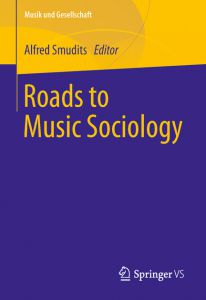Alfred Smudits (Ed.), Roads to Music Sociology, Springer VS, Wiesbaden 2019 (158 pp.)

This anthology arose as a follow-up publication to a 2015 conference with which the mdw’s Department of Music Sociology celebrated 50 years of existence. Its eight contributions aim first and foremost to take stock of music sociology as a subdiscipline of both sociology and (systematic) musicology, with diverse aspects of the resulting considerations repeatedly pointing back to Kurt Blaukopf, the Department’s founding father. Contributor Christian Kaden refers to Blaukopf’s holistic concept that made no distinction between empirical and historical research; Tia De Nora points to how Blaukopf overcame dichotomies (music – society, individual – society, etc.) in favour of a “meso-level” meant to be oriented toward social practices, toward activities between human beings. Similar focuses are seen in the chapters by Howard S. Becker—who picks up where his book Art Worlds, which is frequently quoted in this volume, leaves off—and Antoine Hennion, who seeks to overcome the antipodes of external description and introspection. Motti Regev, on the other hand, suggests that music sociology’s role within sociology as a whole need not be so marginal, in light of how particularly the examination of pop and rock music’s role within the context of globalisation processes as a “microlevel” could produce important revelations that would be of benefit to the methodology used across the entire field.
The text by Alfred Smudits, the broad perspective of which justifies its position at the front of this volume, addresses fields that are problematic for the discipline and can be associated with the end of “mass modernity” (a term he introduced that denotes the “short 20th century” between 1928 and 1989). Peter J. Martin examines sociology’s links to new musicology and popular music studies—pointing out how new musicology is not really that new, instead having assumed central problematic perspectives of all musicology such as reference to a questionable canon or the search for music’s (hidden) meanings. He details how popular music research, on the other hand, was characterised by interdisciplinarity from the very beginning, just as Blaukopf had demanded. And finally, Marie Buscatto’s study on the theme of gender in the context of sociological research examines social stereotypes, social networks, familial situations, and the cultural policy framework as central levels that primarily affect the visibility and realms of possibility enjoyed by artists.
In sum, this anthology offers both a well-considered stock-taking of the discipline and a broad compendium of questions that can be viewed as guideposts for the discipline’s orientation going forward.

